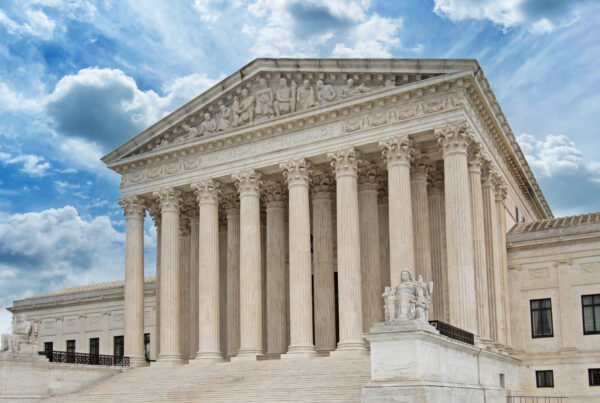Summer 2018 CPA Newsletter
Volume 34 Issue 3
By Mohammed F. Salyani, CPA, FCCA (UK), Principal
Now is the time of year for most Association’s to start preparing the 2019 annual budget. The annual budget is the key to determining the level of maintenance fees that need to be assessed and collected from homeowners. This may sound like an overwhelming task, however when following a time tested process, it is very manageable. This article will guide you through the basic process and point out the top ten troublesome areas to pay attention to.
The Process:
We recommend you start off by creating a spreadsheet with the data categorized in the following columns:
Column 1. Year-to-date actual expenses – This is based upon the Association’s 2018 books and records through a specific point in time. The year to date information should include the most current monthly information through the date of creating the budget.
Column 2. Anticipated expenses – Add for each line, what the Association expects to spend through the remainder of 2018 for each line item. Be sure to remember remaining contract payments, normal monthly expenses as well as anticipated unusual/nonrecurring expenses slated for the end of the year. Include all costs to be incurred, even if you don’t plan on actually paying for them until the following year.
Column 3. Total estimated expenses for the year – This is the sum of the first two columns. The totals should hopefully approximate the total expenses that the Association will incur during 2018.
Column 4. Current fiscal year’s budget – The budget in place for 2018.
Column 5. Expected variance – This column highlights the differences between total estimated expenses and the current year’s budget. It is important to understand each of these variances. If the variance is due to a fluke/one time occurrence then the 2018 budget can still be used as a base for 2019. If the variance is due to new ongoing expenses, then the 2018 budget should no longer be used as a base for that particular line item but rather the actual expenses for 2018 should be used.
Column 6. Next year’s proposed budget – This is where 2019 amounts will be input based on information in the prior columns, plus any known changes from the prior year. It is important to decide what column discussed above should be the starting point for each line item in the 2019 budget. As discussed, a careful analysis of the variances should be done to make sure that the starting point (either 2018 anticipated expenses or 2018 budget) is appropriate. The 2019 amounts should be adjusted for various items such as known contract price increases, planned repairs, maintenance and enhancements not done in 2018. Additionally, keep in mind that prices of all items/services usually do increase. It would be prudent to expect that all prices for the same service may increase 3% to 5 %.
Column 7. Explanatory notes – The notes provide explanations for each line item, including current year’s total estimated vs. budget variance, and the basis for next year’s budget. The notes will help the Board and homeowners understand how the budget was developed. It will also provide somewhat of a roadmap later when comparing the 2019 actual expenses to the budget.
Tough Budget Areas
Many line items of the budget may be straightforward. However, we have identified some categories that are not exactly straight forward and take some additional thought and work.
1. Bad Debt Expense – Unfortunately, most Associations have some homeowners who are not paying their maintenance fees due to various reasons. The preparer of the budget should incorporate a bad debt expense line item in the budget for such owners. This is best accomplished by following these steps:
a. Estimate the number of unit owners that are severely delinquent and not paying their fees b. Determine an estimate of the 2019 monthly fees
c. Determine total monthly fees – maintenance fees, per step “b” above, estimated late fee per association policy, estimated legal fees
d. Multiply the number of delinquent unit owners per point “a” times the total monthly fees per point “c” times 12 months
2. Deficit Reductions – Associations may have accumulated operating deficits due to end of year large snow storms or unexpected/unplanned expenditures. Associations that have a cumulative deficit in the Operating Fund should include an expense line item in the budget called Deficit Reduction. This is used to reduce accumulated deficiencies in the Operating Fund. It may not always be practical to eliminate the full accumulated deficit in one year, so the Association should devise a plan to eliminate the deficit over a certain number of years. It is common to see the deficit eliminated in a period ranging from one to three years. Associations that have operating deficits usually have interfund balances. In conjunction with this deficit reduction, many Associations are able to generate sufficient cash flow to also eliminate such interfund balances.
3. Surplus Carryover – For Associations that had a cumulative surplus in the prior year and are anticipating a surplus in the Operating Fund for the current fiscal year, a surplus carryover should be reflected in the following year’s budget as a revenue line item. This is a relatively complex topic and a detailed discussion of understanding the operating surplus and the implications of the operating surplus on the budget and tax return can be found in our Spring 2017 newsletter – “Operating Surpluses: What you need to know” 1 on the W&G website (www.wgcpas.com). Suffice to say in this article, that any operating surplus should be evaluated and a determination be made as to the appropriate amount to include as a revenue line item in the subsequent year budget.
4. Insurance – Due to the increase in insurance claims arising from nationwide natural disasters, many Associations are experiencing significant increases in the cost of insurance coverage. When formulating a budget for 2019, the preparer should be realistic in planning for increased insurance costs, especially if the Association’s insurance carrier has already communicated the expected amount of a premium increase. Additionally, significant increases in payroll and/or employee claims could also have a corresponding impact on workers compensation insurance costs.
5. Snow Clearing – As we have seen, this tends to be a highly unpredictable expense line item. We recommend the preparer consider a conservative approach in budgeting for snow clearing to avoid some of the problems that may have been faced in prior years.
Budgeting conservatively for this large unknown expense can often mitigate the need for special assessments or reduce the probability that heavy snow fall may create a deficiency in the Operating Fund. One tested method is to calculate the average snow clearing cost for the past five years. While a fixed snow contract will eliminate some of the unpredictability, the preparer must remember to read the fine print in the contract for costs when snow fall exceeds certain contracted limits.
6. Operating Contingencies – As we have seen, the only certainty in life is that nothing is certain. Due to this fact, we recommend the preparer include an expense line item in the budget for an operating contingency of approximately 3% to 5% of annual operating expenditures. This can help offset higher than anticipated expenses or unanticipated expenditures.
7. Engineering Study Update – We always recommend that Associations update their engineering study every three to five years or whenever significant replacement funds have been expended. If this is the year that the Association is due for an updated study, do not forget to include the cost for such a study in the Association’s budget. The cost of the study varies based on the type of study that the Association expects to have prepared. Our newsletter – “Ten Questions to Ask Your Engineer when Updating Your Association’s Reserve Study” 2 will help guide the Association when updating its study.
8. Replacement Funding – With respect to “updating studies”, Associations should ensure that they are appropriately budgeting for their replacement funding needs. Budgeted funding should be based on the engineer’s recommended funding. It is very easy to reduce the funding to the replacement fund in the current year to cover increases in other line items without increasing the maintenance assessments, but the consequences in the future may be dire. There are various funding methodologies to choose from, however once chosen, the Association should stick to that method. We are strong proponents that an Association’s Board should understand which funding option is being used in the budget and be comfortable with that option.
9. Deferred Maintenance – Just as Associations should budget for replacement funding, similar care should be taken to budget monies for deferred maintenance, (i.e. painting, staining, caulking, mulching, etc.—maintenance expenses that are performed less frequently than annually). The best practice is for an Association to budget such monies based upon a well thought out and documented deferred maintenance plan, in which the Association’s management, Board and/or engineer are involved. Our Fall 2017 newsletter – “Deferred Maintenance: The Forgotten Fund” 3 will provide guidance on budgeting for this important line item.
10. Debt Service Costs – If the Association has any outstanding financing, then the budget must include a line for interest and principal repayment. While the annual principal reduction is not an expense that hits the Association’s income statement, it is a cost that should be budgeted. Including the principal repayment as a budgeted line item, will allow for excess funds to be generated which in turn will be used to pay down the loan.
Budgeting Bottom Line
As we stated above, in the world in which we live, it is not unusual for expenses to rise each year. Food, utility costs, insurance, in short, the cost of living, increases every year. Therefore, it is not unreasonable for Associations to see their annual maintenance assessments rise at a moderate level each year. Some Boards may feel that it is good policy to have several years without increasing the fees but it is easier to have moderate increases every year rather than one large increase after a few years. We understand Boards have a balancing act to perform. Financial needs of the Association must be balanced with what may be considered reasonable assessment levels for the Community’s geographic area and for the Association’s homeowners. However, the Board has to make sure it is carrying out its fiduciary responsibility. It is important that the Association’s budget be as complete and accurate as possible so that the Board is able to monitor the Association’s finances and set maintenance assessments at an appropriate level so to minimize the possibility of an unexpected special assessment.





